1. How Your Eyes Work
Linda Vision believes in educating patients to ensure comfort and extreme confidence in every procedure. We can help you achieve visual freedom through a wide range of vision correction methods. Explaining the difference between the normal eye and visual errors may help you to understand the number possibilities and options that every patient has. Whether you are nearsighted, farsighted, astigmatic, or just have difficulty reading, we are dedicated to providing the best visual outcome possible.
2. Normal Sight
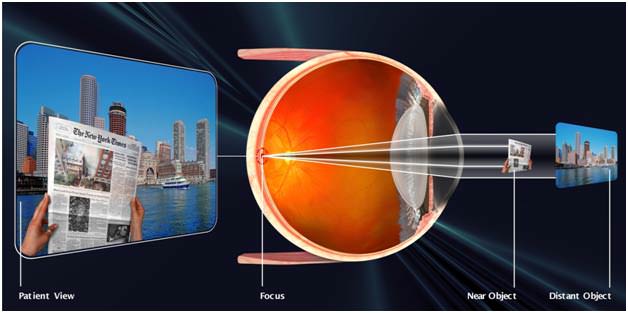
When the eye has a regular shape, light reflects directly on the retina and you are able to see near and far with everything in focus. The result is often referred to as 20/20 vision — you can see what the “normal” person can see at 20 feet. In other words, 20/40 would mean that you can see at 20 feet what the “normal” person can see at 40 feet.
3. Myopia

Myopia occurs when the cornea is too curved or the eye is too long. This causes light to focus in front of the retina, resulting in blurry distance vision.
4. Hyperopia
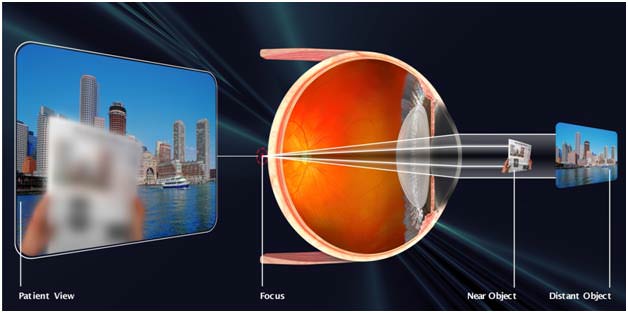
Hyperopia occurs when the cornea is too flat or the eye is too short. This causes light to focus at a point beyond the retina, mostly commonly causing blurry near vision.
5. Astigmatism
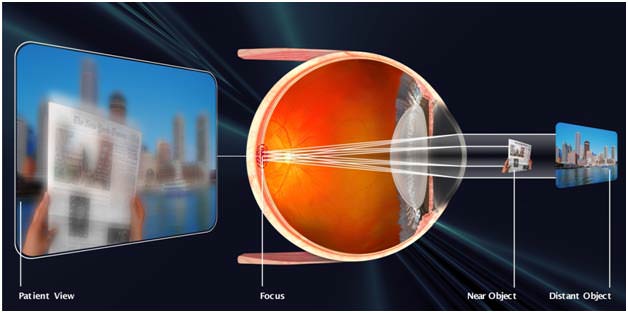
Astigmatism occurs when the cornea is oblong in shape. This results in multiple focal points of light on the retina, causing blurry and distorted vision.
7. Refraction Exam for Glasses
Dr. Linda Vu is a general ophthalmologist and eye surgeon who also provides her patients with comprehensive eye care, such as refraction exams for glasses. If you are having trouble with your vision, whether it is in the distance or up close, you may need prescription glasses. Many people think that because they have never used glasses in the past, they do not need them now. However, visual problems can have a gradual progression in which patients do not notice the changes in their vision until it is very advanced and starts interfering with their activities.
Patients in their early 40’s will start noticing that fine print is difficult to read. This condition is called presbyopia, and is the reason why most people wear “reading glasses” after the age of 40. If you are experiencing these difficulties while reading, a refraction exam for glasses can provide you with the correct prescription for your eyes so that you can regain the ability to read a magazine or do up close activities
Visual problems are not only applicable to adults. If your child is having trouble concentrating in school, you may want to have their vision checked to see if their problems are related to not being able to see the board in class. Visual problems like this may be due to myopia, a condition that results in blurry vision in the distance.
The cause of visual changes can be a number of things, but the answer may be as simple as needing a pair of glasses. It is important to schedule a yearly eye exam so that you can be sure that your eyes are providing you with the best vision possible. If you are interesting in finding out if you should be wearing glasses or know you need them but have not had an exam yet, schedule an appointment with Dr. Linda Vu for a refraction exam.
8. Contact Lens Fitting
Patients who wear glasses or should be wearing glasses, but do not like them, should consider wearing contact lenses. Contact lenses provide patients with clear vision without the hassle of wearing something that hides your face. They are worn on your eyes and although you may notice their presence initially, after a short time they will go unnoticed.
Contact lenses provide more freedom and make it easier to play sports without the fear of having them break, or travel without being worried about forgetting them at a restaurant. If you are interested in wearing contact lenses, Dr. Linda Vu can do a contact lens fitting in order to fit you with the pair of lenses that will give you the best possible vision.
There are a number of types of different contact lenses but Dr. Vu will discuss your options so that you make the decision that is best for you. During your fitting, Dr. Vu will also review the care instructions for these lenses. With proper care, the risks of using contact lenses are minimal.
It is important you make sure to keep the lenses clean and to properly wash your hands when touching in and around your eyes. If you are interested in having great vision without the hassle of glasses, then you should schedule an appointment with Dr. Linda Vu for your contact lens fitting.
9. Dry Eye
Dry eye is a medical condition of the eyes in which your eyes do not produce enough tears, or your tears evaporate too quickly. If you have or think you may have dry eye, Dr. Vu can examine you to help find the best solution for your eyes.
Natural tears lubricate the eye, providing a clear and smooth surface that protects the eyes. When there are insufficient tears present, your eyes are susceptible to scratches and infections, and foreign matter such as dust cannot get washed away. In many cases, a lack of tears results in blurry and cloudy vision. Patients with dry eye will notice that their vision improves temporarily after blinking multiple times. This is due to the fact that with each blink, tears are spread over the surface of the eye, resulting in a smooth surface that provides clearer vision.
People who spend multiple hours focusing their eyes on a computer screen for example, are at a greater risk for developing dry eye. It is important to remember to blink often and take short breaks to look away from the monitor.
A. Remedies for Dry Eye
There are a number of treatment options that someone with dry eyes has. You should discuss your symptoms and needs with Dr. Vu so that she can recommend the best treatment option for your eyes. If you have noticed dryness in your eyes, using artificial tears to lubricate your eyes may be a simple solution. However, some patients require further treatment. If this is the case, Dr. Vu will evaluate your condition and prescribe the necessary medications to help your eyes.
10. Presbyopia
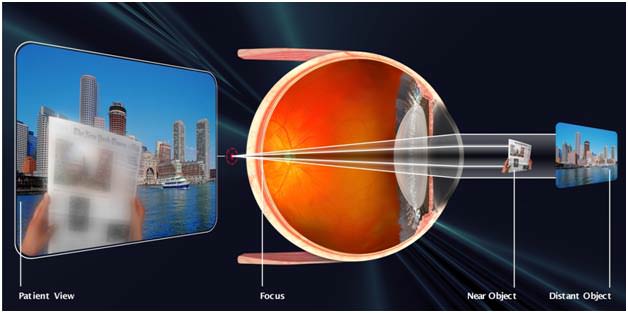
Presbyopia is a natural condition of aging, which involves the gradual loss of the ability to focus on near objects. Virtually everyone over the age of 40 is affected with this age-related farsightedness, and need to use glasses for reading and other activities requiring close up vision. Over time, the natural lens of the eye loses its flexibility and it becomes difficult to focus on near objects, and harder to vary focus lengths. The first symptoms most people notice are difficulty reading fine print, particularly in low light conditions, eyestrain when reading for long periods, and momentarily blurred vision when transitioning between viewing distances.
11. Cataract
A cataract is a clouding of the natural lens inside the eye. Normally, light rays are focused through your lens and onto the retina, a layer of light sensitive cells in the back of the eye. Over time, the lens can become cloudy and prevent light rays from passing clearly. The result is that the images on the retina appear blurry or distorted. When the lens gets cloudy enough to obstruct vision to any significant degree, it is called a cataract.
Cataracts generally develop slowly and painlessly. In fact, you may not even realize that your vision is changing. Once a cataract develops, neither glasses or contact lenses can sharpen your vision, and neither diet or a laser treatment will make a cataract go away. The only way to remove is a cataract is with surgery.
Over the years, there have been numerous advances in the technology for removing cataracts. These improvements have made cataract surgery one of the safest procedures performed today, and the recovery time significantly shorter. Millions of people undergo this vision-improving procedure every year and they experience excellent results.
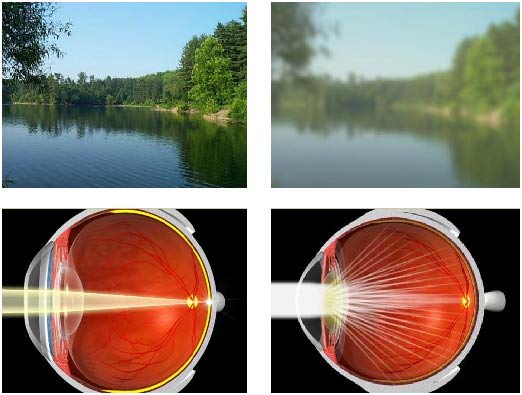
A. What Causes Cataracts?
The most common cause of cataracts is aging. Other causes include trauma, medications such as steroids, systemic diseases such as diabetes, and prolonged exposure to ultraviolet light. Occasionally, babies are born with cataracts.
B. Preventative
Measures Reducing the amount of ultraviolet light exposure by wearing a wide-brim hat and sunglasses may reduce your risk for developing a cataract. However, once it starts developing, there is no cure except to have the cataract surgically removed. An outpatient surgical procedure can remove the cataract through either a small incision (phacoemulsifcation) or a large incision (extracapsular extraction).
The best time to have your cataract removed is when your vision is bad enough that it starts interfering with your lifestyle. Additionally, when a patient suffers from a separate medical condition that can affect their eyes (e.g. Diabetes), the removal of the cataract is often necessary in order for doctors to prevent, diagnose, or treat any damage inside the eye.
C. Cataract Symptoms
The typical symptom of cataract formation is a slow, progressive, and painless decrease in vision. Often, vision with cataracts has been described as seeing life through an old, cloudy film. Patients will notice that the use of glasses will not reverse the effects of their cataract.
Signs of Cataracts
– Difficulty driving
– Difficulty seeing at night
– Difficulty viewing a computer screen
– Colors appear dim and faded
– Frequent change in glasses prescription
– Blurry, double, or distorted vision
D. Cataract Surgery
Procedure Cataract surgery is usually performed one eye at a time and takes less than 30 minutes to complete. a. First, a small incision is made on the upper part of the eye. b. Then, the old, cloudy lens is removed. c. The new intraocular lens is implanted.
12. Monovision
Monovision is a visual concept that works well for most, but not all patients with presbyopia. It works by completely correcting the dominant eye so that it is focused on distant objects, while leaving a small amount of nearsightedness in the non-dominant eye, in order to allow for near vision. The result is that the dominant eye is better focused in the distance and the non-dominant eye is better focused for near. When both eyes are used together, reading and distance vision is comfortably usable. Monovision will enable the patient to see reasonably well for both distance and up close, without the need for glasses for routine activities, such as reading price tags, menus, and cell phones.
A. Monovision Options
a. Monovision LASIK A permanent LASIK procedure in which one eye is treated for distance vision, and the other one for near vision. Monovision works by completely correcting the dominant eye so that it is focused on distant objects, while leaving a small amount of nearsightedness in the non-dominant eye, in order to allow for near vision. Monovision is not recommended for pilots, taxi drivers, or anyone who has a license to drive commercial vehicles.
b. Monovision Contact Lenses The effect of these contact lenses is very similar to that of monovision LASIK. Your dominant eye will be fit with a contact lens that helps you focus distant objects while your non-dominant eye will be fit with a lens that will allow you to focus near objects. While wearing the lenses, most patients are comfortable seeing in the distance and up close. However, once you remove the lenses, your vision will return to its normal state.
13. Comprehensive Eye Exam
An annual comprehensive eye exam is recommended for people of all ages. During a full medical eye exam, Dr. Vu will dilate your eyes if needed, examine your inner and outer eye anatomy, and check your intraocular pressure and vision. It is important that you have your yearly checkup because there are many eye conditions that are asymptomatic but can drastically affect the health of your eyes. If you are diabetic, it is very important to have your blood sugar under control and to have a Diabetic eye exam every 6 months.
14. Glaucoma
Glaucoma is an asymptomatic medical condition of the eyes that develops from a number of different causes. Abnormal nerve anatomy and high intraocular pressure are indicators of Glaucoma, but further testing is necessary in order to diagnose it. Although there is no cure for Glaucoma, it is important that patients begin treatment to control it as soon as they are diagnosed.
Treatment is necessary to prevent damage or any further damage from occurring. Patients often state that they do not have any symptoms and therefore do not think it is necessary to use medications. However, if left untreated, Glaucoma can lead to irreversible visual damage and even blindness.
High intraocular pressure is a risk factor for developing Glaucoma. Therefore, if you know you have or have had high intraocular pressure, you should have regular exams to screen for Glaucoma. During a comprehensive eye exam, Dr. Linda Vu will screen for this and other medical conditions of the eyes. If you are interested in having a full eye exam and making sure your eyes are as healthy as can be, schedule an appointment with Dr. Linda Vu.
15. Diabetic Eye Disease
Diabetes can have a drastic impact on your eyes. If you or someone you know has Diabetes, it is important to have regular physical as well as Diabetic eye exams. Diabetes has the ability to damage your vision, especially when your blood sugar is not controlled. Diabetic patients often notice that their vision fluctuates as their blood sugar goes in and out of range. You should make an effort to keep your blood sugar controlled and to have a Diabetic eye exam every 6 months to make sure that your Diabetes is not having a negative impact on your eyes. If you are interested in finding out how your Diabetes is affecting your eyes, schedule an appointment with Dr. Linda Vu for a Diabetic eye exam.
REGRESAR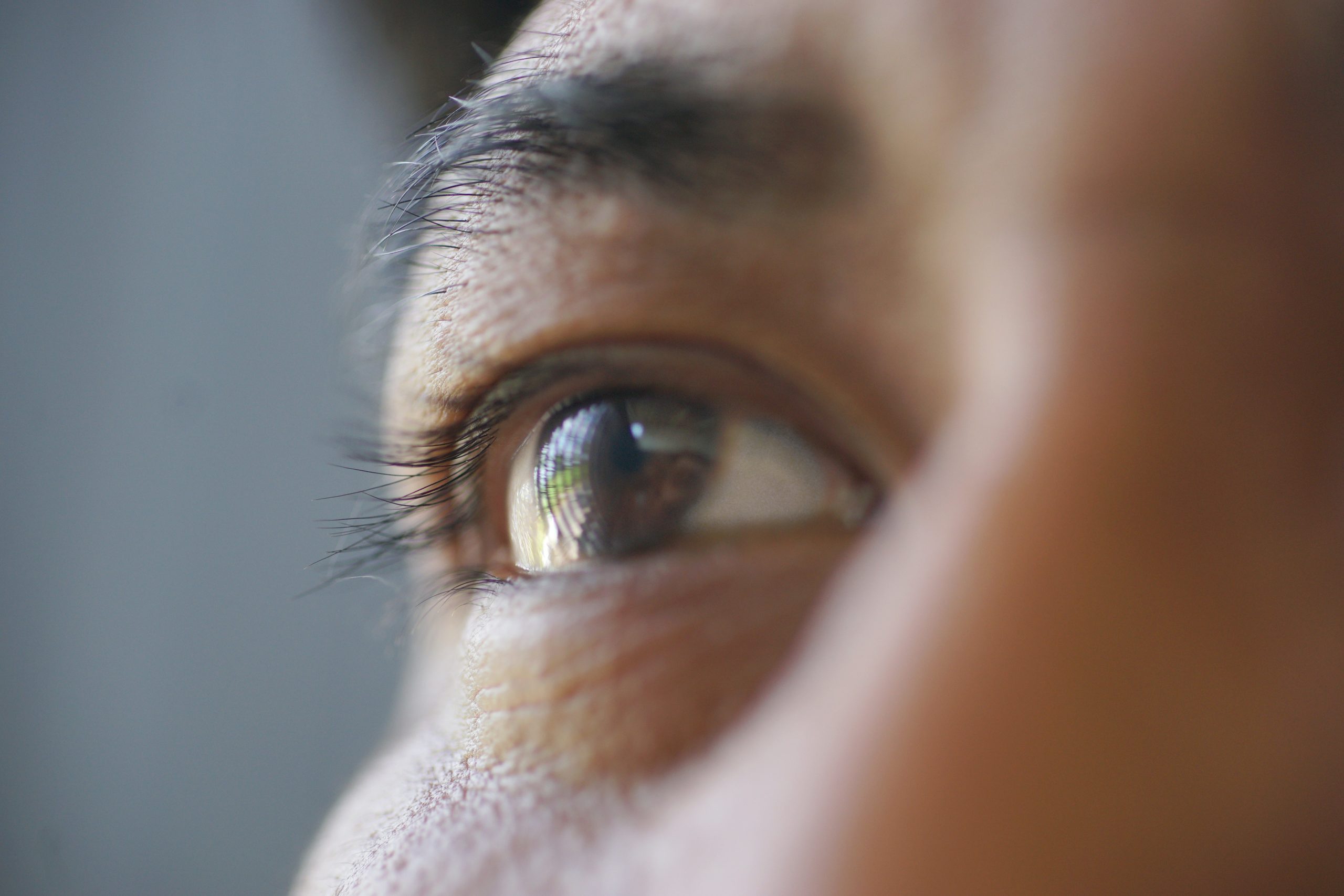
Anotomía del Ojo
Esclerótica- la parte blanca opaca del ojo Córnea- la parte frontal curvada transparente del ojo que cubre el iris, la pupila, y la cámara anterior Limbo Corneal- la orilla entre la córnea y la esclerótica Iris- una estructura delgada, circular en el ojo, responsable de controlar el diámetro y el tamaño de las pupilas y la cantidad de luz que llega a la pupila. “Color de ojos” es el color del iris. Pupila- una abertura situada en el centro del iris que permite que la luz entre en la retina. Retina- un tejido sensible a la luz que cubre la superficie interna del ojo
Visión Normal

Cuando el ojo tiene la figura regular, la luz se refleja directamente en la retina y puede ver de cerca y de lejos con todo enfocado
Miopía

La Miopía se ocurre cuando la córnea es demasiado curva o el ojo es demasiado largo. Esto hace que la luz se enfoque adelante de la retina, resultando en visión de lejos borrosa.
Hipermetropía

La Hipermetropía ocurre cuando la córnea es demasiada plana o el ojo es demasiado corto. Esto hace que la luz se enfoque en un punto más allá de la retina, comúnmente causando visión de cerca borrosa.
Astigmatismo

El Astigmatismo ocurre cuando la córnea es de figura oblonga. Esto resulta en múltiples puntos de enfoque de luz en la retina, causando visión borrosa y distorsionada.
Necesita usted un Examen de Refracción para Anteojos?
Si usted está teniendo problemas con su visión, ya sea en la distancia o de cerca, usted puede necesitar anteojos recetados. Pacientes en sus 40’s comenzaran a notar que las letras pequeñas son difícil de leer. Esta condición se conoce como presbicia o presbiopía, y es la razón por la cual la mayoría de la gente usa “anteojos de lectura” después de los 40 años. Los problemas visuales no sólo se aplican a los adultos. Si su hijo está teniendo problemas para concentrarse en la escuela, es posible que desee hacerle un examen de la vista para ver si sus problemas son relacionados con no poder ver el pizarrón en clase. Si está interesado en saber si usted debe de estar usar anteojos o sabe que los necesita, pero no ha tenido un examen, haga una cita con la Dra. Linda Vu para un examen de refracción.
Adaptación de Lentes de Contacto
Los pacientes que usan anteojos o deben usar anteojos, pero no les gusta, deberían considerar el uso de lentes de contacto. Los lentes de contacto les proporcionan a los pacientes una visión clara sin la molestia de usar algo en su cara. Si usted está interesado en usar lentes de contacto, la Dra. Linda Vu puede hacerle una adaptación de lentes de contacto para escoger el par de lentes que le dará la mejor visión posible.
Que es el Ojo Seco?
El ojo seco es una enfermedad de los ojos en la que los ojos no producen suficientes lágrimas, o las lágrimas se evaporan demasiado rápido. Si usted tiene o piensa que puede tener ojo seco, la Dra. Vu lo puede examinar para ayudar a encontrar la mejor solución para sus ojos. Cuando no hay suficientes lágrimas, sus ojos son susceptibles a los arañazos, las infecciones, y visión borrosa.
Presbicia o Presbiopía

La presbicia es una condición natural de envejecimiento, que consiste en la pérdida gradual de la capacidad para enfocar objetos cercanos. Prácticamente todas las personas mayores de 40 años se ven afectadas con esta hipermetropía relacionada con la edad, y la necesidad de usar anteojos para leer y otras actividades cercanas.
Cuando se debe hacer un Examen Comprensivo de los Ojos?
Un examen anual completo de la vista es recomendable para personas de todas las edades. Durante un examen médico completo de los ojos, la Dra. Linda Vu va a dilatar los ojos si es necesario, examinar la anatomía interior y exterior del ojo, y revisará la presión intraocular y la visión. Es importante que usted tenga su chequeo anual, porque hay muchas enfermedades de los ojos que no tienen síntomas, pero pueden afectar drásticamente la salud de sus ojos.
Glaucoma
El glaucoma es una condición médica sin síntomas de los ojos que se desarrolla de una serie de causas diferentes. Anatomía de los nervios anormal y la presión intraocular elevada son indicadores de glaucoma, pero aún es necesario realizar pruebas para diagnosticarlo. Si se deja sin tratar, el glaucoma puede causar un daño irreversible visual e incluso ceguera.
Que es la Enfermedad Diabética de los Ojos?
La diabetes puede tener un impacto drástico en sus ojos. Si usted o alguien que conoce tiene diabetes, es importante tener exámenes oculares diabéticos. La diabetes tiene la capacidad de dañar su visión, especialmente si el nivel de azúcar en la sangre no está bajo control. Usted debe hacer un esfuerzo para mantener el nivel de azúcar en la sangre controlado y hacerse un examen ocular diabético cada 6 meses para asegurarse de que su diabetes no está teniendo un impacto negativo en sus ojos.
回去眼睛的解剖
鞏膜 – 不透明、眼白的部分。

角膜 – 眼睛透明、彎曲的前部分,覆蓋着虹膜、瞳孔、及前房。 角膜緣 – 角膜和鞏膜的交界。

虹膜 – 眼內薄而圓的結構,用於控制瞳孔的直徑、大小及到達瞳孔的光線數量。

眼睛的顏 色就是虹膜的顏色。

瞳孔 – 虹膜中心的開口,允許光線進入視網膜。 視網膜 – 對光靈敏的組織,覆蓋眼內的表面層。
正常視力
當眼有一個正常的形狀,光線會直接反映在視網膜上,您的焦點能看到近及遠的一切。
近視眼
當角膜過於彎曲或眼球過長,這會迫使光線聚焦在視網膜的前面,從而導致遠距離視力模糊。
遠視眼
當角膜過於平坦或眼球過短,這會迫使光線聚焦超出了視網膜,從而導致近距離視力模糊。
散光
當角膜變形為長橢圓形,在視網膜上會出現多個光線焦點,造成視力模糊和扭曲。
您是否需要眼鏡折光測試?
如果您視力有困難(無論是遠或近距離),您可能需要配處方眼鏡。40歲以後人士會開始發現細字難以閱讀。這種情況被稱為老花眼。正因如此,大多數人40歲後會戴「老花眼鏡」。視覺問題不僅成年人有。如果您的孩子在學校裡有集中困難,他們可能需要視力檢查,看看孩子的問題是否涉及到不能清楚地看課堂上的黑板。 欲了解您是否需要戴眼鏡, 或您從未有過眼科檢驗,請預約與傅白蘭醫生進行折光測試。

隱形眼鏡驗配
需要但不喜歡戴眼鏡的人士可考慮配戴隱形眼鏡。隱形眼鏡可提供清晰的視力,但沒有像眼鏡掛在臉上的麻煩。如有興趣,傅白蘭醫生會幫助您做隱形眼鏡的驗配,尋找適合您的隱形鏡,給您最好的視覺。
什麼是乾眼症?
乾眼症是一種眼睛的醫療狀況,原因眼睛並未產生足夠的眼淚,或者眼淚蒸發太快。
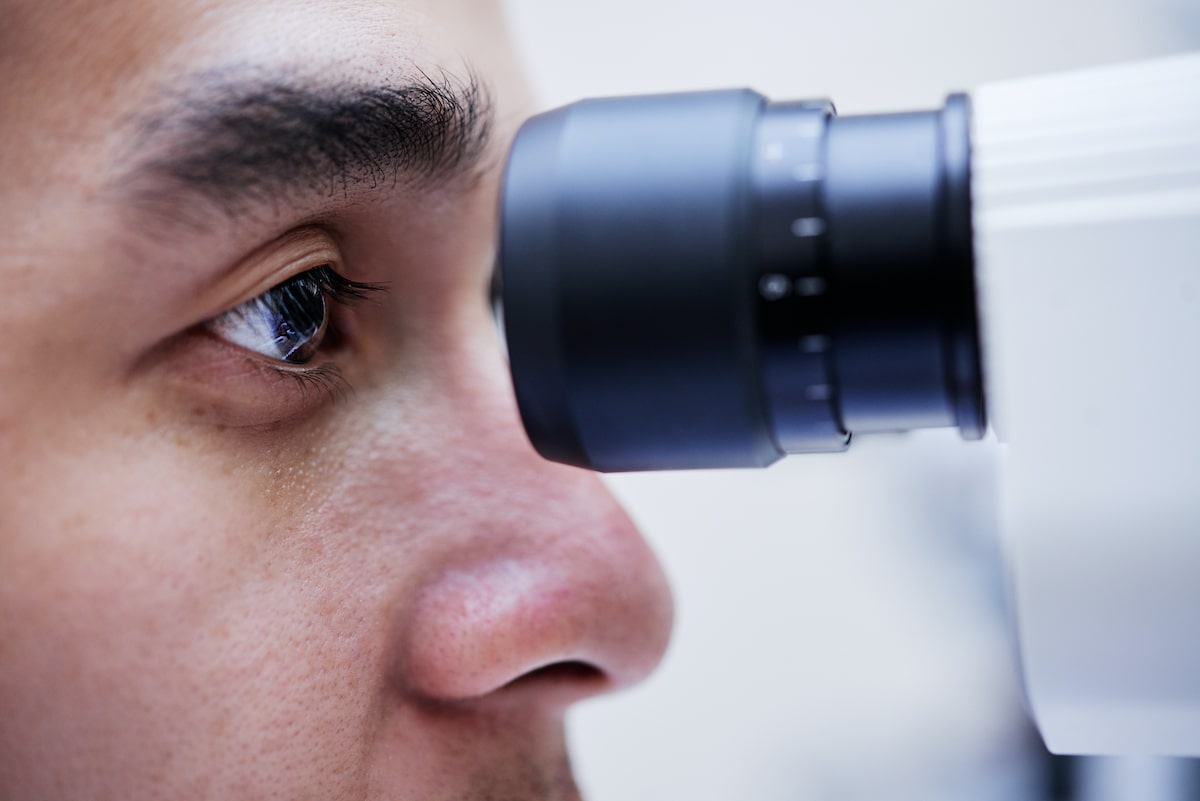
如果您有有乾眼症(或懷疑有乾眼症),傅白蘭醫生會為您檢查,然後對正下藥。當沒有足夠的淚水,您的眼睛很容易被劃傷、感染及出現視力模糊。
老花眼
老花眼是一種自然老化的現象,對近處物體逐漸喪失聚焦能力。幾乎每個40歲以上人士都受到影響,而需要使用眼鏡幫助如閱讀等近距離活動。
什麼時候須做綜合性的眼睛檢查?
建議所有年齡人士定期每年進行一次綜合性的眼睛檢查。在一個綜合眼科檢查中,傅白蘭醫生將檢查您的眼睛內外、眼壓和視力。如有必要會把瞳孔放大以深入檢測。年度檢查是非常重要的,因為有許多眼部疾病是無症狀,但可大大影響您的健康。
青光眼
青光眼是無症狀的眼睛醫療狀況。它從不同的原因引起。異常眼神經和高眼壓是青光眼的徵兆,但需進一步的測試以便診斷。如果不及時治療,青光眼可導致不可挽回的視力損害,甚至失明。
糖尿病眼疾是什麼?/
糖尿病能對您的眼睛產生極大影響。如果您或您身邊的人有糖尿病,定期的糖尿病眼部檢查是很重要的。糖尿病能損害視力,尤其是當血糖無法被控制。您應保持您的血糖水平和每6個月作糖尿病眼科檢查,以確保糖尿病沒有在您的眼睛作出負面影響。

